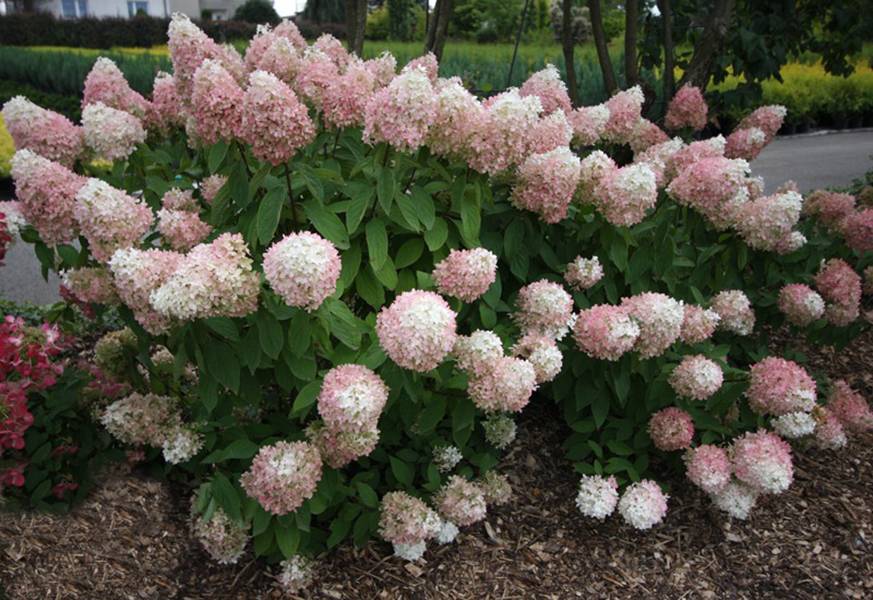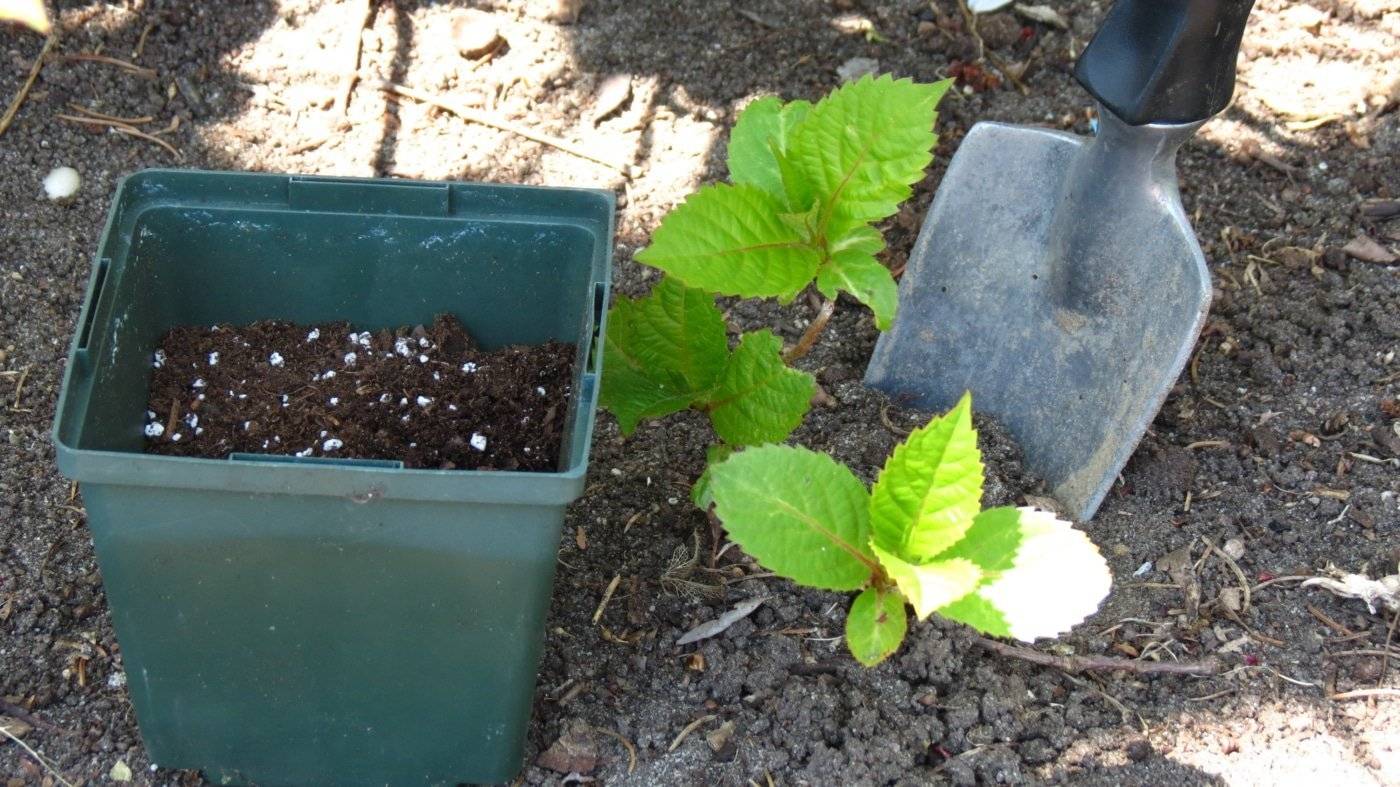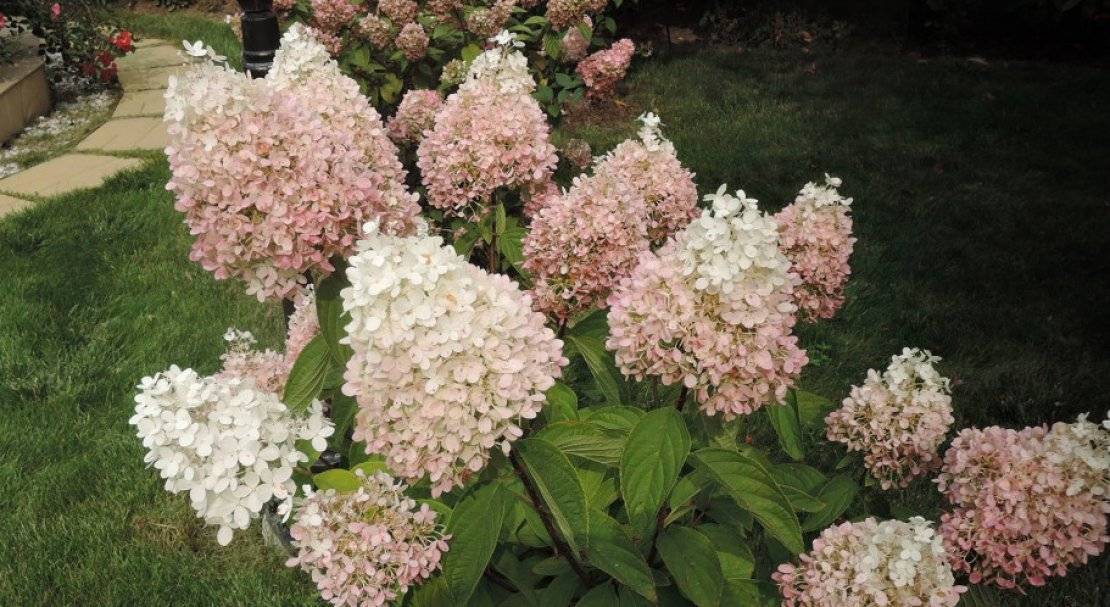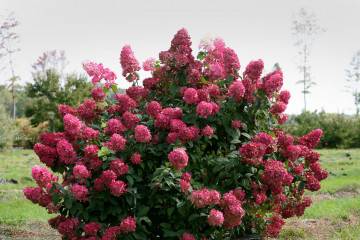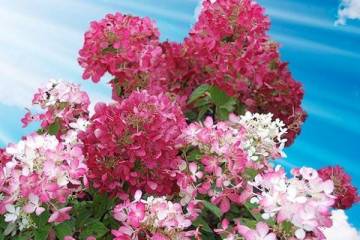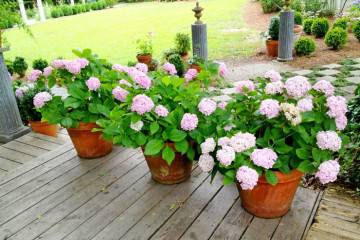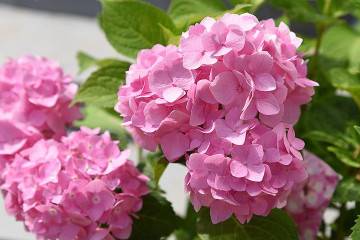Hydrangea Magical Sweet Summer (Hydrangea Paniculata Magical Sweet Summer)
Content:
Among the variety of hydrangea varieties, it can be difficult to decide. One of the popular varieties is the Medzhical Sweet Summer panicle hydrangea. The peculiarity of this variety is its unusual flowering.
Hydrangea Magical Sweet Summer (Hydrangea Paniculata Magical Sweet Summer) paniculata: description
Before buying a Magical Sweet Summer hydrangea seedling, you need to study all the characteristics of the plant.
The origin and appearance of the Magic Sweet Summer hydrangea
Hydrangea Magic Sweet Summer was bred in 2006 in the Netherlands. The bush is small, the crown is compact, spherical. The plant grows to a height of 1.5 m. The leaves are large, light green in color.
How the Magical Sweet Summer hydrangea blooms
Hydrangea Magical Sweet Summer blooms in large panicles, collected from a large number of small flowers. Panicle height can reach 13-15 cm. Inflorescences are not pollinated. Only in the depths of the bush are several fruiting panicles.
This variety has an unusual flowering. First, the inflorescences are milky green, then they acquire a milky cream color, and at the end of flowering they become pink. All these colors are simultaneously present on each panicle, smoothly moving from tone to tone.
The foliage also changes its color depending on the season. In spring, the leaves are light green, closer to summer they become darker, and by mid-autumn they turn into lilac-burgundy.
Buy hydrangea paniculata Magic Sweet Summer in flower shops or nurseries. The price for a seedling varies from 300 to 3500 rubles. *
Transplantation of hydrangea Magic Sweet Summer after purchase in open ground
After the purchase, you need to immediately transplant the seedlings into the ground. The longer they stand, the longer the hydrangea will take root after planting.
What is needed for landing
For landing you will need:
- shovel;
- drainage (expanded clay, crushed brick);
- rotted manure;
- wood ash.
Choosing the best place
Hydrangea prefers to grow in open sunny areas, but it also tolerates partial shade. It is best if the shrub is in the sun in the first half of the day, and in the shade the second.
The soil is prepared in the fall: the soil is dug up, weeds are pulled out and rotted manure or compost is introduced. In the spring, immediately before planting, the soil is dug up again. After that, you can start planting a seedling.
Step-by-step planting process
Planting hydrangeas in the ground is best in the evening, when it gets cooler outside.
Step-by-step planting process:
- Dig a hole (the depth depends on how powerful the root system of the seedling is).
- Fill the drainage at the bottom.
- Place the seedling in the center of the hole and cover with soil.
- Sprinkle wood ash over the soil and sprinkle with plenty of warm water.
Reproduction of hydrangea Magic Sweet Summer
There are several ways to propagate Sweet Summer hydrangeas. Growing a shrub is not difficult, even a beginner can handle it.
Propagation by cuttings
Description of the propagation process by cuttings:
- Cuttings are cut in mid-July. It is best obtained from the side branches growing at the bottom of the crown. The best time to harvest planting material is early in the morning.
- The cut shoots are immediately placed in a glass of water and the buds are cut off from them (if any).
- Then the branch must be divided into several parts, each of which has 2-3 pairs of leaves. The lower leaves are cut off.
- Then you need to put the cuttings in a growth activator for 2 hours (epin, root or zircon).
- At this time, you need to mix peat and sand. Cuttings will need to be planted in this mixture.
- Transplant the cuttings into the ground, cover with jars and water abundantly.
Rooting occurs within 20-35 days. Transplanting into open ground can be done at the end of August.
Growing from cuttings
Layers of hydrangea are propagated in early spring before bud break. Choose the strongest and longest branch from the bottom of the bush. Dig a small trench nearby and bend a branch into it. Bury with soil and secure. By the end of summer, several young bushes will grow from each layer.
Dividing the bush
The easiest way to reproduce is by dividing the bush. It is suitable if the plant is already mature and has grown a lot. The bush is dug out of the ground and cut into several parts with a shovel. Then each part is planted in new places.
Hydrangea Care Magic Sweet Summer
In order for the hydrangea to bloom profusely and not get sick, it needs constant care.
Watering mode
Watering the shrub begins in early spring, when the snow melts and the soil warms up. In summer, the amount of watering should be greater, especially if it is hot outside.
Top dressing
Organic fertilizers are applied in the fall before the onset of winter. In spring and summer, mineral fertilizing is needed. In the first half of the season, nitrogen is added before budding. After the beginning of budding, potassium and phosphorus are added to the soil.
Features of care during the flowering period
During the flowering period, hydrangea needs potassium and phosphorus. These dressings increase the number of buds and the duration of flowering. Faded panicles must be cut off immediately so that nutrients do not go to them. Also during this period, abundant watering is required.
Features of care during the rest period
During the dormant period, organic matter can be introduced into the soil. Thus, the bush is prepared for the next season. Nitrogen fertilizers stop applying and reduce the amount of watering.
Preparing for winter
Before the onset of winter, the soil is mulched with peat or sawdust. The branches are cut, leaving 30-40 cm from the entire length. They stop applying any fertilizers and watering the bush.
Thus, panicle hydrangea is very popular among flower growers. The shrub grows well, thanks to this quality it can be planted as a hedge. Its bloom will surprise all neighbors in the area.
* Prices are for December 2019
